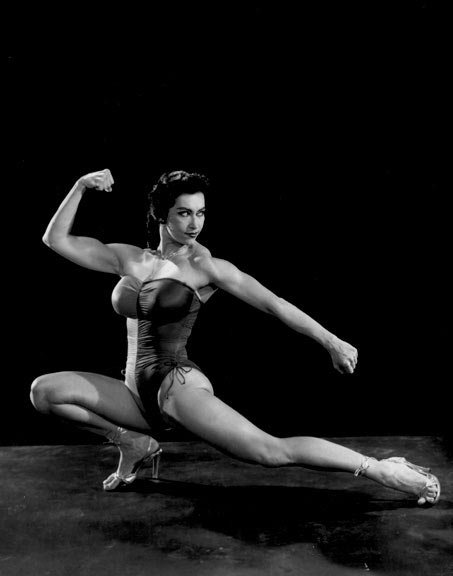
In 1980 the first major women's bodybuilding contest, the Ms. Olympia, was born. Its winner, Rachel McLish, presented a muscular, yet feminine and attainable physique and captivated her audience with beautiful good looks, enviable proportionality, and stunning symmetry. Women's bodybuilding had begun its evolution and the future looked extremely bright.
But the attainment of female muscularity and its promotion actually began eight years earlier with one woman who would go on to become known as the progenitor of women's bodybuilding, the originator of the fit, athletic, and muscular female form as a marketable and highly desirable health and fitness commodity.
Having begun weight training in 1964 to stay in shape during her pregnancy—a practice frowned upon at the time as being detrimental to a woman's health and because strong muscles were simply perceived as more of a masculine trait—Kellie Everts quickly became endeared to the feeling weight training gave her and the results in size and self-confidence she gained through working the iron. She immediately saw the many benefits bodybuilding training could provide for women.
Wherever she went, Kellie promoted women's bodybuilding, extolling its virtues to whoever would listen. Shunned by people who were not yet ready to associate strength and muscle with femininity and the woman's role of caregiver and homemaker, Kellie continued her fight to shift the public's mindset to one of acceptance that women and weights were compatible.
And through her diligent efforts she built a formidable physique of her own and wanted to showcase it in a competitive setting, as the men had already been doing for many years. She would not have to wait long.
In 1972 Kellie began competing at bodybuilding events in the New York City area. Kellie was happy to be onstage showing her hard and muscular body, secure in the knowledge that her efforts had thrown the spotlight onto women's physique, although she still had to contend with patronizing attitudes that relegated women's bodybuilding to that of a beauty pageant. Women's physique contests were even called "body beautiful" and the contestants were judged on fitness, beauty, and femininity, but not muscle.
In the small, insular bodybuilding community, positive change would not and could not occur rapidly enough for Kellie. So she engaged in something unprecedented and, in hindsight, pioneering: the promotion of women's bodybuilding through the media. In 1975 Kellie became the first female bodybuilder to appear in a mainstream publication — Esquire Magazine.
Before then she had regularly been profiled in Muscle Training Illustrated, a pre-eminent bodybuilding magazine of its day; this was five years before female bodybuilding's first major physique competition effectively legitimized women's bodybuilding. It is clear that Kellie's groundwork had undoubtedly enabled the formation of women's competitive bodybuilding.
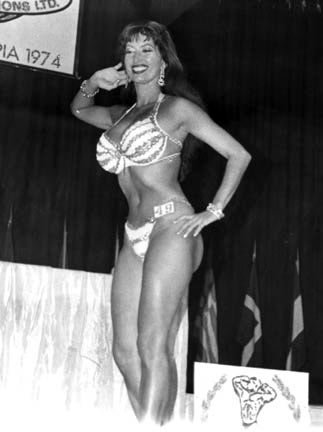
After the first Ms. Olympia contest in 1980, women's bodybuilding grew exponentially and provided many opportunities for its contestants. Prize money increased and lucrative contracts were given to top champions. The physiques also grew. Many now display hardness and muscularity that was unthinkable a decade ago.
However, in the late 90s, women's bodybuilding began to lose its traction in the physique competition arena and its fan base all but dissipated for good. Prize money decreased and with the emergence of women's figure and fitness competition, women's bodybuilding was pushed to the sidelines, something that has not since been truly rectified.
It could be said that the overly muscular female became unmarketable and the physical development needed to win at the highest level was both unattainable and impractical for people new to the sport. Kellie, however, had other ideas.
Though many new women's bodybuilding champions have emerged and the sport still attracts support, it is not what it was in the 80s and 90s. Throughout female bodybuilding's decline Kellie Everts has been a strong proponent of handing the reins of power to women bodybuilders, to let them to choose their own destiny and rebuild the sport back to where it was at its peak and then some.
In the following interview Kellie, in her own controversial and thought-provoking style, discusses where and how it all went wrong and how the women's event can again become a force within competitive bodybuilding. Into her 60s, Kellie, looking fantastic, still weight trains and promotes bodybuilding.
At an age at which many women are content to let nature take its course, she has shown that a bodybuilding lifestyle can be life transforming in more ways than one. And this goes a long way to show that once you're a bodybuilder you're always a bodybuilder and for Kellie Everts some things never change.
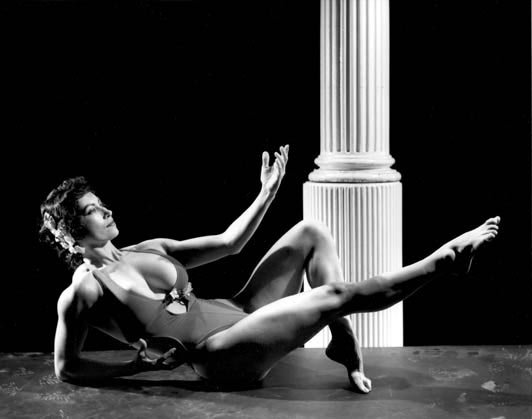
First up, what are your thoughts on the state of professional women's bodybuilding today?
Women's professional bodybuilding today is deplorable. The contestants spend more money—on drugs—than they can earn if they win; it's a vanity thing. People who win the contests cannot hope for any lucrative modelling or endorsement careers ... what is it all for? Just to say, "I won."
When was woman's bodybuilding at its strongest, and if managed correctly could it have been as popular as the men's game?
As explained in my book, I mark the Kim Chizevsky era as the end of female bodybuilding. Her success was a double whammy. First, her body was the most muscular of all time, unsurpassed by anyone before or since then as far as I know. Second, the Weider's stopped promoting female bodybuilding with her, and then when they sold out to AMI the promotion of female bodybuilding de facto stopped.
The image of women in the bodybuilding magazines reverted back to approximately what it was like in the 70s, except, of course, modern times made the "fitness" style models harder and stronger. Most of them also have breast implants, which was not so in the old days. When I started looking at the magazines again in the mid 90s, it was like déjà vu, "the 70s are back". I was startled. What happened? I thought, and then did the research.
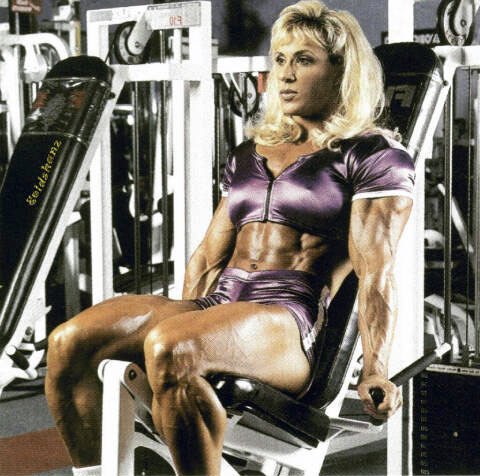
How could women's pro bodybuilding have been managed to strengthen its competitive base and to allow for greater opportunities for its competitors?
It's all a matter of promotion. In the book my insider stated that they "Couldn't use the women to sell their supplements." Hardy har, har. They are using women universally to sell everything, they just didn't want to.
Marketing ideas abound, they had to use them, they didn't want to. Same ole', same ole' gender game. You cannot have women's bodybuilding run by men without eventually running it into the ground, because we are in a gender war, called "Who will dominate who?"
Males were promoting the muscularity of females, but sooner or later, it was a case of when they feel "threatened" they will back down—and so they did. As I explained many times in the book: my idea when taken to the mainstream media was not issued by a male.
Males—who ran the institutions—did not seek to promote female muscularity; they wanted women as window dressing for men, the sideshow that would make it more palatable, less of a "gay" thing if you know what I mean. Not that they are all gay, but simply less of a man/man thing—women balance it out.
After I promoted [women's bodybuilding] through the mainstream media, it took off. The Playboy spread clinched it. In Wikipedia it says Lisa Lyons was the first female bodybuilder to be in Playboy, but of course I was, May 1977: "Humping Iron."
Is it all men's fault? Certainly not. I broke through their defences with my aggression—yes aggression—in promotion through the media. It was time for another woman to step to the plate, take what had been done, and continue in the arena of promoting an idea into an institution. Joe Weider had done it. Ditto Dan Lurie.
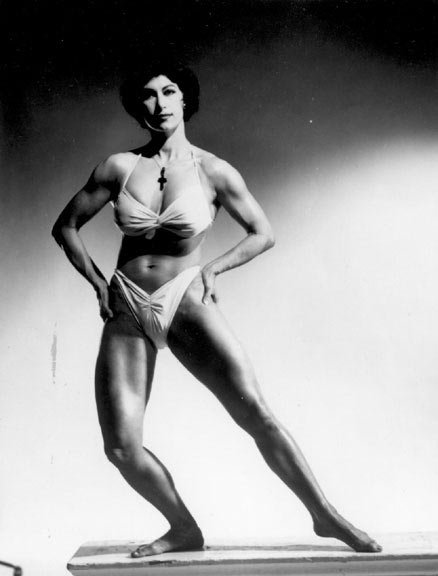
Why could a woman not start a bodybuilding venue? Because they didn't have the chutzpah. One of them, Doris Barrilleaux, was given ample opportunities. Dan Lurie made her an editor, gave her a magazine, but it flopped ... she was also head of female bodybuilding for the Weiders, a position she used to discriminate against me, she is catty and competitive, can't put herself aside and work for the sisterhood. She prevented me from entering the IFBB Caesar's Palace contest in Atlantic City, 1981. I was there picketing instead!
Where was the woman who could see the picture? That we're in a gender war and we have to fight? There was no such woman. The women who entered the door I had kicked in were "working for the man" and so, the man, who for a while gave them cookies from the cookie jar, suddenly took the jar away. Or rather, he separated the males and females as had been the case before, with women getting a way-inferior cookie jar. Wasn't that predictable?
But these women, having no originality or panache as I had, were employees, looking for fame and fortune—mostly fortune. Had I been like that, it would not have happened, there were no rewards. Think of it: I worked for photographers, and did TV shows, with no money entering my hands, only criticism, and yet I did it.
Why? For the sisterhood—but these women are not sisters. They work against each other, so, they cannot win. Men work together. Women won't sacrifice for the cause of women. They sacrifice for children, husbands, animals, but not the cause of women, except in rare cases; certainly no one in female bodybuilding, besides me, was like that.
You are widely known as the first female bodybuilder, yet have not often been given the credit you deserved. Why?
First, I had to do the thing, and then get credit for doing it. That was the "second war." After a prolonged campaign, I won the second war. It wasn't easy. The saddest thing was the other women who were part of the campaign to discredit me. Here's the woman who kicked down the door for you, but you deny her respect? OK, see where that gets you, sister.
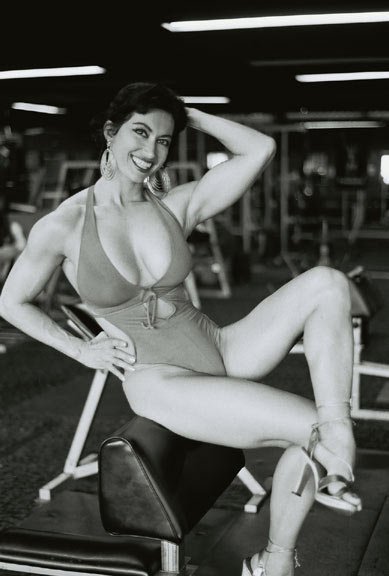
And so they have earned the punishment they get from the men. Credit for a thing is all due to politics and in this world truth is not valued, it's all "mind control," "disinformation" and "promote what works best for me/us." Just because something is true does not mean it will be promulgated. On the contrary, there are many truths that are being hidden, swept under the rug, closeted and denied on purpose.
I explain in the book how the IFBB (the organization that eventually took over bodybuilding) had an agenda against me, and pros Lisa Lyons and Rachel McLish. Part of the reason was Arnold Schwarzenegger.
Consider, then as now, fighting alone, then the newly reorganized WBBG sees the facts and gives me the title of "Progenitor—the woman responsible for modern competitive female bodybuilding." Now think of that. Neither Lisa Lyon nor any other woman was given that award, or any award comparable to it, by any organization. I alone am awarded, and in the Hall of Fame of an international organization, for being the founder of female bodybuilding.
In my case the truth came out because I fought for it, with the same kind of aggressive energy that made female bodybuilding happen. No other woman could have been given the award but me; none came forward to claim it. I won.
Conversely, when you look at the spirit of the women in bodybuilding after me it is a "lie down let them do what they like with me" spirit. It's "if I lie down and let them do what they like, they'll pay me." They did not fight men. They lay down for them. I fought men, with an idea they didn't like! See the difference? But that takes a special woman. They are not special.
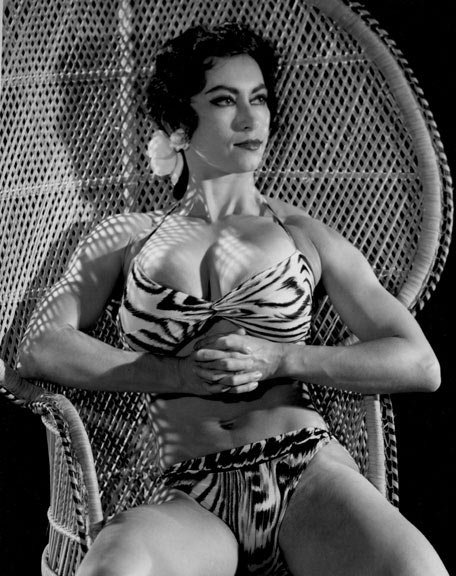
So how did you first become involved in women's bodybuilding and what impact did you have on its formation as a legitimate sport in its own right?
I got involved in the beauty contests starting in 1972, "Ms Americana" IFBB. I won Best Body, and second place overall; my body was better than the winner's. My impact was one of promotion in the media. I was bringing forth the idea. The wisdom at that time was that males are more muscular and should develop those muscles further. Women are not muscular and certainly should not make any attempt to be more so; to do this would be "unfeminine."
In 1975, and prior to that time I got it into a six-page story in Esquire, to be unfeminine was a sin of major proportions. In late 1976, when we sent in the "Humping Iron" article to Playboy, it was so "out there" they paid us half and were not going to use it. Luckily, "Pumping Iron" came out, and so it suddenly worked, they used it as "Humping Iron."
In between these two articles, I went on every venue I could foster, including Penthouse Forum, TV Shows like To Tell The Truth, Mike Douglas, Stanley Siegel, Real People,—Laura Combs did Real People after me—AM New York, AM Washington, all without pay of course.
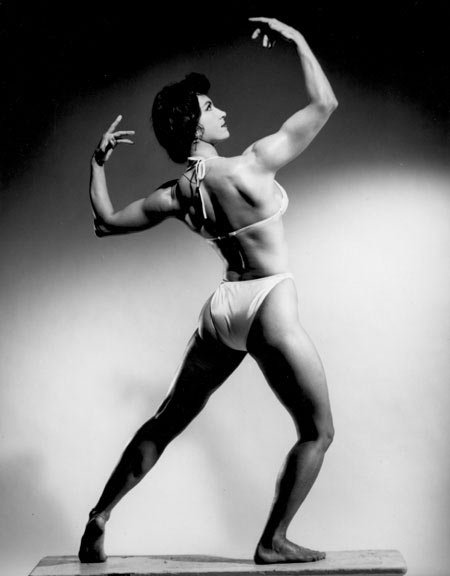
You have said that sexism and patriarchy are responsible for the fall of women's bodybuilding. How so?
Indeed. Think of it. In the gender war, males have to be "bigger and badder" than women because that's how they dominate. This is promoted. Male bodybuilding was a part of that "public relations program." Now this woman comes along, promoting that females also have muscles and should develop them, and then what?
What I did in the media was like little David knocking out Goliath. But no woman came along after me to keep it going—not even to keep my name alive. It remained in the hands of men. Not that this could stop the trend of females being fitter, stronger, and more muscular and macho. That they could not do; the idea took hold worldwide and cannot be erased.
But what they could do, and did do, was to relegate the female bodybuilding part into oblivion; it's a remnant, a tiny cult. Mind you, they are promoting "fitness" and "bikini" or "figure" contests again, basically telling women to go back the way they were ... how about if they started "jock strap" or "body beautiful" contests for men, not allowing men to fully develop their muscles—how would that make men feel?
At what point did female bodybuilders begin to experiment with drugs to gain more muscle size, and who were some of the protagonists in this area?
I was in the 1980 Ms. Olympia and it was written that some complained of hair on their faces. So it was there, or even before. I was not privy to any personal information so I don't know who the protagonists were.
The point is that women now entered a realm where males were using drugs—and some females—so competition attempts to level the playing field, and then get the upper hand. Drugs are an attempt to be better than the next person.
There is an argument that is often made: women bodybuilders should not use anabolic steroids because they are male hormones. What are your thoughts on this argument? Should women bodybuilders use steroids?
I've heard that one since 1980 ad nauseum; Steve Michalik said it to me. It's really silly. My question is: if males have so much of these hormones, why are they taking them?
The fact is, men and women both have the same hormones, but yes, males have more testosterone. Black males also have more muscle, and I was told by a black woman bodybuilding journalist, "Iron Eyes," (now deceased) that they tried to stop the men from taking hormones for a while, and when they tested the men the black guys wiped the floor with the whites.
So of course, they stopped testing them, but continued testing the women, for a while—everything was unfair. Now you have bodybuilding, so if the males can take it, so should the females, it should be a level playing field.
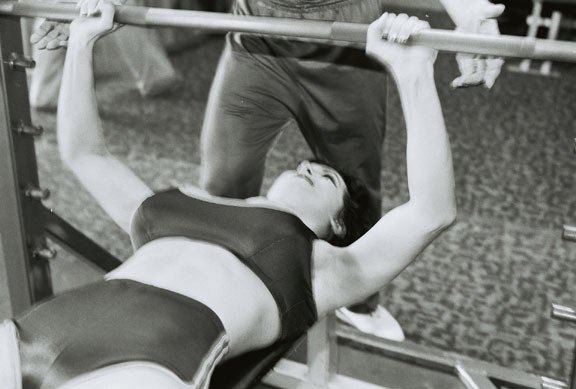
I might add that after menopause, female hormones die down, but their testosterone levels increase. Men's levels decrease, they get more feminine, have less "virility" whereas women, with more testosterone, get hornier, and they can get more muscular. So I am doing well with my bodybuilding these days. I look great.
Anabolic steroids build muscle, so if this is the game, you will have people taking the drugs. If they don't they can't compete.
How did the public view women bodybuilders back in the 70s and 80s? Do they view them any differently today?
What public?
In the old days when female bodybuilding hit the scene, it was looked at with great interest and mixed feelings. Today, only a cult audience is seeking women's bodybuilding. The women in gyms aren't bodybuilding. I joined four gyms. They're doing aerobics and fitness and that is it. Women's bodybuilding, per se, has been forgotten by the mainstream public.
Some say women's bodybuilding "softer and more athletic physiques in the early 80s were more desirable to those seen in the 90s, where they even began to rival some of the male competitors for mass and conditioning. At what stage were women's physiques at their best in your view, and why?
It's a subjective feeling, depending on what one likes in the woman's body. I can see why most males would prefer the softer look: that makes them remember, "I'm a man, she's a woman." But there are the "shmoes" who pay $300 to wrestle and feel up hard-muscled women, so that turns them on. My feelings have to do with the gender war and with women's empowerment; it's the issues, although for myself I maintain a natural muscularity with no drugs.
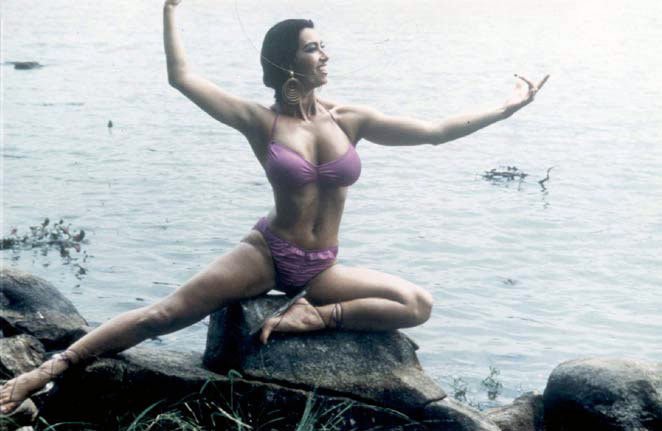
You mentioned earlier that Kim Chizevsky, to your mind, signaled the end of female bodybuilding. At what point after Kim's reign did women's pro bodybuilding begin to decline and why did this happen?
After Kim Chizevsky it went downhill. I believe she got the highest cup: $60,000. Then after the Weider promotion of bodybuilding women declined, they sold out to AMI and it all but disappeared. From there on in they did choose the most muscular regardless of their looks or overall sex appeal because since they weren't using them in magazines, they didn't care. Prior to that, looks were always a factor. Now they can look terrible.
In the movie Pumping Iron Two, the producers, to create controversy and rivalry, deliberately contrasted the physiques of Rachel McLish and Bev Francis to convey the two different looks within women's bodybuilding at that time. Had women's bodybuilding not gone in the direction of Bev Francis' more massive and muscular physique do you think it would have become and remained more marketable?
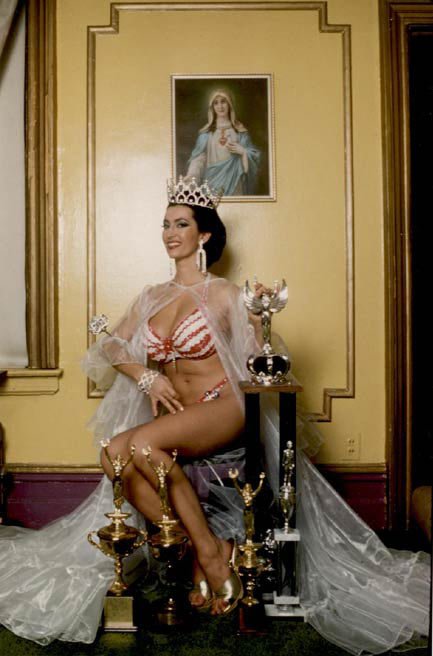
The Rachel McLish type body is now being marketed under "fitness" and "figure" and so, yes, that's what the males wanted. But is it empowering for women? Not hardly. Once again, it's males who are choosing what they want, who they promote. They are telling women how to look.
In the bodybuilding world women are at the mercy of men. But the world at large, here is the picture, as outlined on my sites, blogs and books. Right now women maintain a 64% presence in the colleges and universities, while males are dropping out of schools like flies.
Since 2004, women have been getting more doctoral level degrees than men. Right now there are less females of employable age than there are males, and yet, females hold down more jobs. Women are entering management and human resources positions at a fast pace; they will be choosing who works, and they will be overseeing the millions of male prisoners. Males are falling apart biologically and genetically—check out Dr. Bryan Sykes and Dr. Steve Jones' genetic research.
What I am saying is there is a bigger picture going on, and bodybuilding is a microcosm of it. The macrocosm is that we are moving out of patriarchy and into matriarchy. Women will rule the family and the world, eventually—perhaps in 200 years—and the future belongs to women. At that time, even now it is changing, women will determine the appearance of males by "natural selection" or choice.
I wager that they will not want the biggest, baddest, males; they will not be controlled by rich men, as women will be the wealthy, and they will want those who are intelligent, cuddly, cute, macho but not cold, qualities far different than what is espoused today.
They will want men who are sensitive, give creature comforts, are pleasant and handy around the house, can cook and do their share of housework, can converse, have feelings—these will be the types of males women will choose when they are the "powerful".
What could be done to boost the popularity and marketability of professional women's bodybuilding?
Take it out of the hands of males, start organizations solely owned and managed by women, and you can re-establish female bodybuilding in a proper manner.
I would now like to switch topics to your own personal bodybuilding progress, something you have continued to experience as you have aged. You look to be in excellent shape today. How do you do this?
To stay in shape, it takes an average of two hours per day of exercise, including all the dancing I do at home and in the clubs. I used to walk and jog a lot, but right now I mostly dance, do kicks, stretches, ballet style, and martial arts style exercise. For a while I practiced boxing but that's sporadic. And of course I watch my diet.
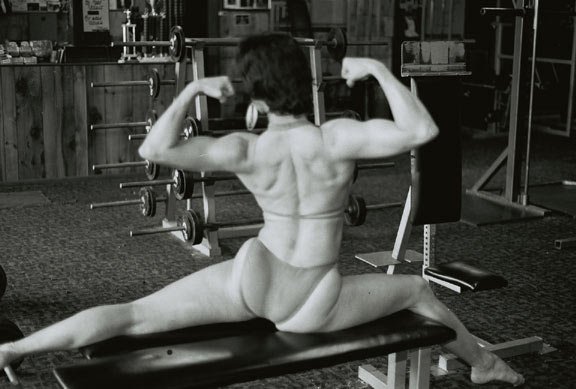
Could you describe your current training program in more detail?
I usually do most of it in one session that drags out to two hours. First I do stretching. In this you must find your limit and surpass it. For years I did a split (stretch), but it wasn't perfect, so then I did it to perfection and it hurt. But I kept pushing and tried stretching my legs from every angle imaginable, including bending forward and putting my leg behind me, and straight up.
I also combine sit-ups with stretching, see how far down I can stretch my legs, and also do the one-arm push-ups and backward push-ups. The results of these exercises create quite a stir in the clubs, as I can lift my leg into the air for photos, straight up, and also put my leg on the shoulder of a guy as we dance.
Sometimes a good male dancer will fall to the floor and do all sorts of push-ups and splits and I either get on top or behind him and do my thing, or else I fall to the floor and do the same as he gets on me.
If you don't make exercise fun, or emotionally stimulating, it gets old real fast, and harder to train if you just go through the same old weightlifting routine day after day. Pretty soon it's hard to do. I have weights at home and belong to a few gyms including those which stay open all night. As long as I train effectively at home, go to clubs and dance, the gym is not mandatory, so sometimes I skip for a while, but I am always happy to get back.
When weight training, I concentrate on my legs a lot, giving them as much time as my upper body. I have an idea in my mind of how I want my body to look, and it involves incredible legs and shoulders. At home I have dumbbells - 20 and 25 pounds - and do all my training with them. I used to do more elaborate stuff on a bench outside. The dumbbells seem to be enough along with all the dancing and gym. After all I'm not training for contests: my muscles are intermediate.
My stretching comes first. When I am halfway limber all over I begin dancing in between and also do the weights in between various stretches. This all takes about one to two hours daily.
When I go out to dance I often get to the clubs early when the dance floor is empty. After one drink I get on the floor and do all the moves I can't do when it's crowded, which includes going in circles doing kicks every which way, as in martial arts - front, side, round house and different variations - and sometimes splits. After the floor fills up I am limited, but it's all fun and I dance until I can no longer do it. People are amazed as to where I get all of my energy.
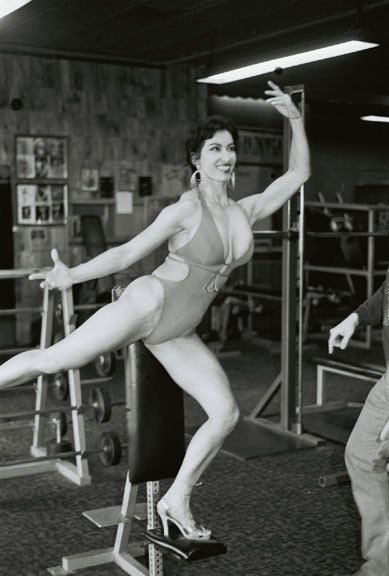
So where do you get all of your energy?
The secret of energy is, first, health, which means proper diet and exercise. Second it is will power—you make yourself continue when you feel tired and you get a second wind. I have learned that it's after the second wind, not the first try, where I get all the energy to keep going for hours.
Sometimes I feel tired when I first begin at the club but I keep going and move for hours. Then I am so revved up that dancing even after I get home. I try to fall asleep but keep inventing new dance moves in my head.
You mentioned the importance of diet. Could you describe the nutrition plan you currently follow?
My diet is 90-95 percent vegetarian, but I do include lots of eggs, fish, and cheese for their protein content. I eat meat maybe 15 times per year, mostly on holidays. When I do eat meat I often boil it to help remove all of the substances they feed to the animals, boiling also helps to disperse much of the fat into the water. I am careful not to eat processed foods but make things from scratch. The more processed your foods the more chemicals they contain, including those that make you fat.
What are some of your diet tips?
I avoid salt, MSG, all artificial sweeteners and also fluoride. I drink tea or instant coffee with honey and cinnamon every day. I avoid most foods that contain sugar, but honey is good. I never drink soda, which is the worst, and when I am in a convenience store buy juice that appears to be the most natural.
I often use my water distiller—absolutely pure distilled water is the best thing you can drink. I also employ juicing—all the roots as well—and use the blender. In the blender I cut up oranges and grapefruit into small pieces, add water, and blend until liquid. The white parts of these fruits contain valuable bioflavonoids.
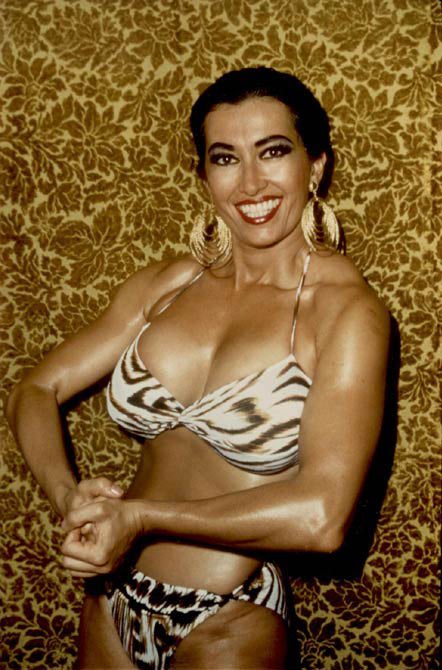
I also pick a lot of herbs and seeds in the fields and woods, including the hops of wild roses (for juicing), milk thistle for a liver tincture, St Johns Wort to support calm nerves and to support sound sleep, burdock (the whole plant) for a skin lotion, and plantain (a flat-leafed grass) off my lawns.
I also eat red clover taken from my lawns (I have about three acres of lawns) from spring to autumn for health (10 to 30 blossoms at a time). I eat anything in the wild that is edible including blackberries, raspberries, wild cherries, and wild apples.
One favorite fat-free recipe of mine:
Take broccoli, cabbage, carrots, parsnips, potatoes, onions, garlic and whichever additional vegetables you might want to include.
Remove the soft part of the broccoli (use this for a salad). Take the vegetable flesh and cut it into small pieces, do the same with any roots. Take the hardest flesh and place it in boiling water. Leave it for five minutes then add the softer parts, and last the greenest softest parts. Boil all of this for about 10 minutes on medium.
Take canned hummus and refried beans and add these to the vegetables and water. Add any seasoning you prefer. Add canned tomatoes as an option. This soup will provide you with many valuable nutrients; I like to make enough to last at least three days.
I understand you are also a big believer in supplementation, Kellie. Which supplements do you take and how have the benefited you?
I personally take a huge array of vitamins and supplements. Here is what I take:
- A good multi vitamin and mineral capsule.
- A strong vitamin B supplement.
Then I take separate amounts of vitamin A, lots of vitamin C and vitamin E, vitamin D3 (be careful not to take too much of this over a longer period), a calcium/magnesium/zinc combo, krill oil, probiotics, acidophilus culture, hawthorne berries, Co Q-10, nattozimes, Echinacea, flax seed oil in liquid form, quercetin and bromelain, saw palmetto, biotin. These are taken at least five to six days per week.
I also use special supplement to add to my juice including green magma—many healthful green foods contained in one powder. There is also sweet carrot juice powder for the urinary system, D-mannose powder and a liquid concentrate grape seed extract. For these ingredients I take a can of frozen juice - unsweetened or with little added sugar—and add a few tablespoons of each powder and a few drops of the liquids.
There are additional things I feel are important for overall health. The right attitude is crucial. Stress and any kind of tensions kill your mind and your energy levels. Any negative emotions such as bitterness, envy, and hate of any type kill energy.
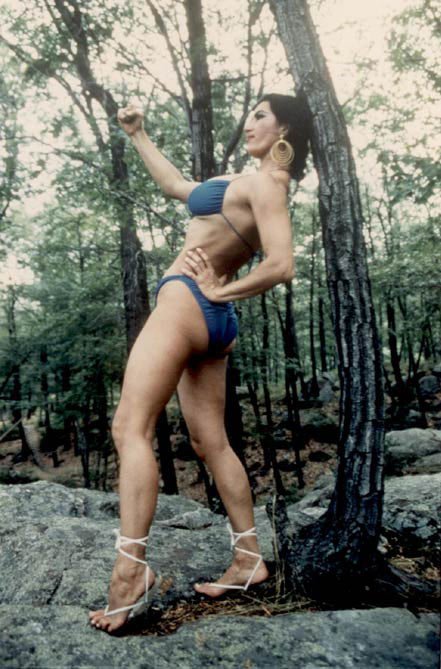
Resist negative feelings and be above your enemies. My motto for doing this is: you can't kill me because I am already dead (meaning dead to the ego). There is no me, I am an actor, what you see is not the real me so you can't hurt me by attacking the image. I am infinite spirit.
At base, we get our energy from the infinite spirit or energy or energy source some call God and to have negative emotions blocks the way to that source of power. When you hate, when you envy the person you hurt the most is you, not them. So stop hating, people can't hurt you.
You must have great faith and confidence that the infinite source of power that is within you, inside your very soul and body. It is there at all times for you to access - this power never condemns you but is always ready, willing and able to help you, restore you and fill you with power at every moment if you think in positive terms.
Do not also underestimate the power of prayer, meditation and sleep. Meditation and sleep are similar in that you are totally relaxed in both cases, and you need to relax, all the time. Even when you are exercising or dancing do so in a relaxed (calm intensity) manner, not with negative tension.
This kind of tension is exhausting. When I am super stressed I often employ "sleep therapy", which simply means I sleep as much as possible. To fall asleep and remain so, I take a few of each: melatonin, L-tyrosine, St Johns wort, and calcium/magnesium.
Sex is also beneficial, but hard to get. You laugh? Good lovemaking with a good partner is not easy to find. But if you can do so as it is great for your health and will help you to release many feel-good hormones. It's an exchange of positive energy; you recharge one another's batteries, providing you have the right partner.
Massage therapy is also fantastic. I give great massages to others and myself; they say I'm the best they ever had. Massage both stimulates and relaxes. And it delivers blood throughout your entire body.
It is my pleasure talking with you today Kellie; thank you for your words of wisdom. Wishing you every success. Do you have any final words?
Thank you David Robson for the opportunity to be on Bodybuilding.com. I am grateful for being given the opportunity to tell my side of the story!
